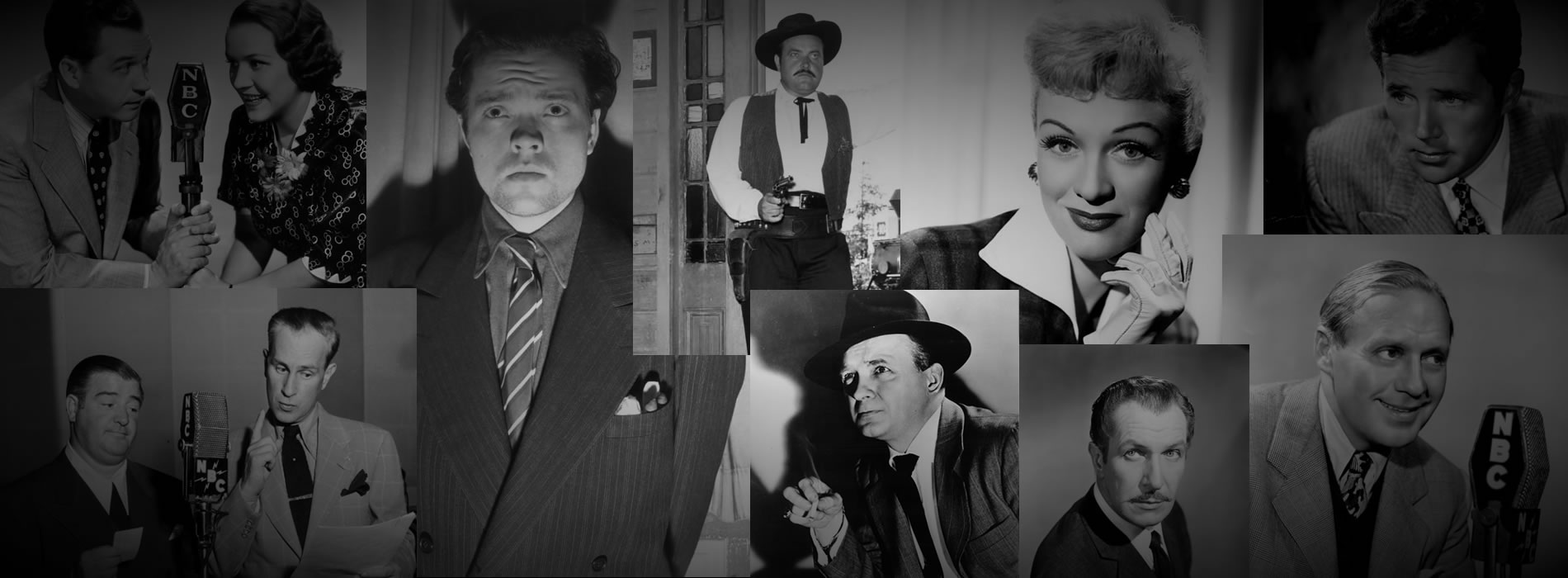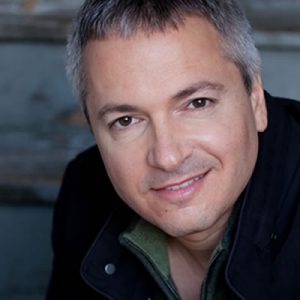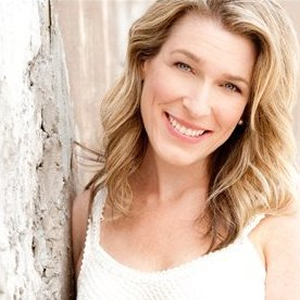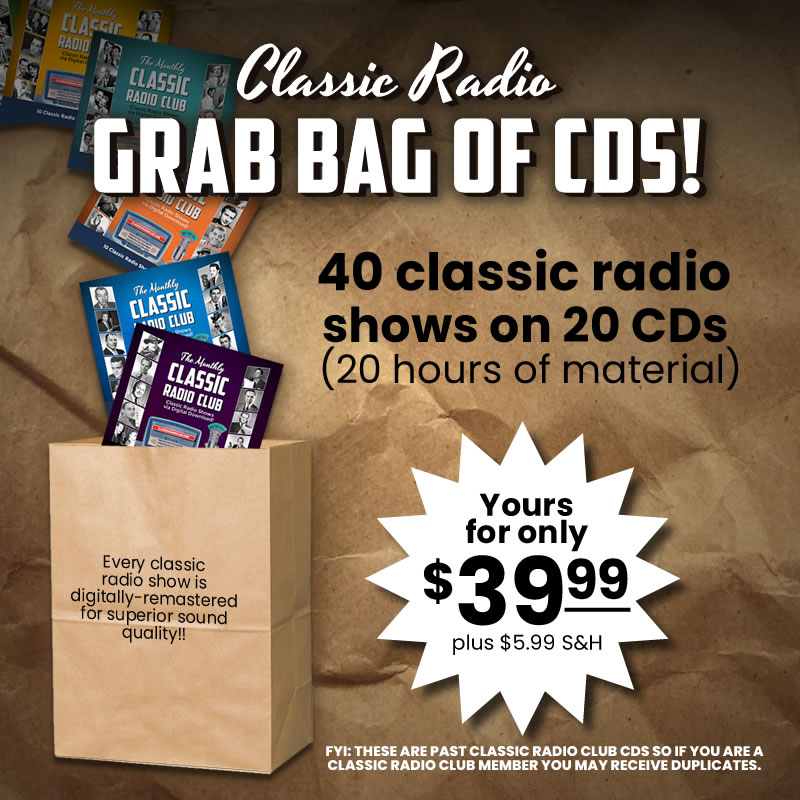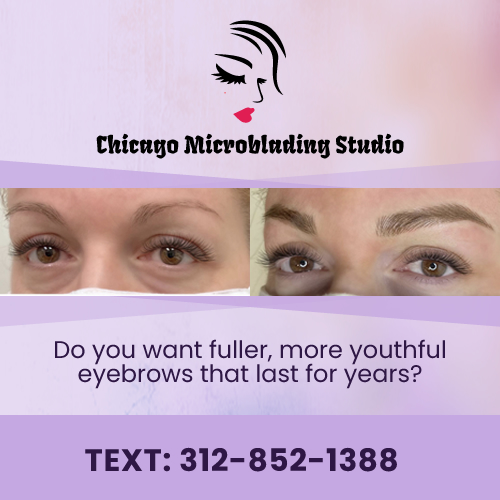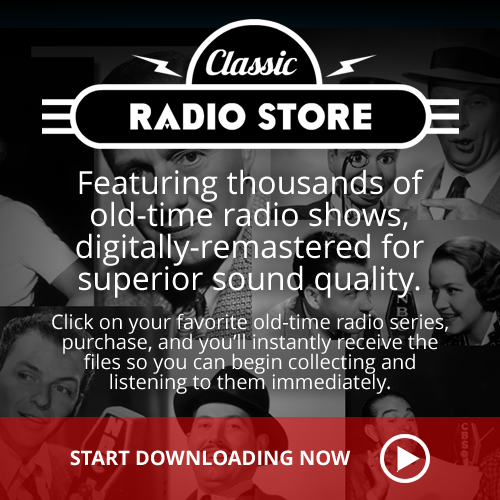
NEWSLETTER | VOL. 7, NOVEMBER 2021
Welcome to this month’s edition of The Hollywood 360 Newsletter, your place to get all the news on upcoming shows, schedule and interesting facts from your H360 team!
Carl’s Corner
by Carl Amari
Hello everyone – here’s the Hollywood 360 Newsletter, November 2021 Vol. 7. As someone on our mailing list, you’ll receive the most current newsletter via email on the first day of every month. If you don’t receive it by the end of the first day of the month, check your spam folder as they often end up there. If it is not in your regular email box or in your spam folder, contact me at carlpamari@gmail.com and I’ll forward you a copy. The monthly Hollywood 360 newsletter contains articles from my team and the full month’s detailed schedule of classic radio shows that we will be airing on Hollywood 360. Each month I’ll write an article on one of the classic radio shows we’ll present on Hollywood 360. The week of November 13th, 2021 we’ll be airing an episode of DRAGNET so here’s an article on this incredible detective series.
DRAGNET
by Carl Amari
Throughout the fifties, there were numerous crime dramas and detective programs on television but none had the caliber of Dragnet, arguably the most successful police show in the history of television. Dragnet became a prototype of realistic detective work without the flamboyant dark alley chases and near-miss gunshots exchanged. Real police files from the Los Angeles Police Department provided the framework, but viewers were always reminded that “the names have been changed to protect the innocent.”
To give the appearance of realism, creator and star, Jack Webb provided a documentary-style narration in the role of Sgt. Joe Friday, who described in deadpan fashion the details of the case. The series was an instant smash and ranked among the top 20 television programs in the Nielsen ratings for almost a decade. Webb received numerous awards and commendations for portraying the private lives of police officers in a serious fashion. The program and the network also won numerous awards and citations along the way.
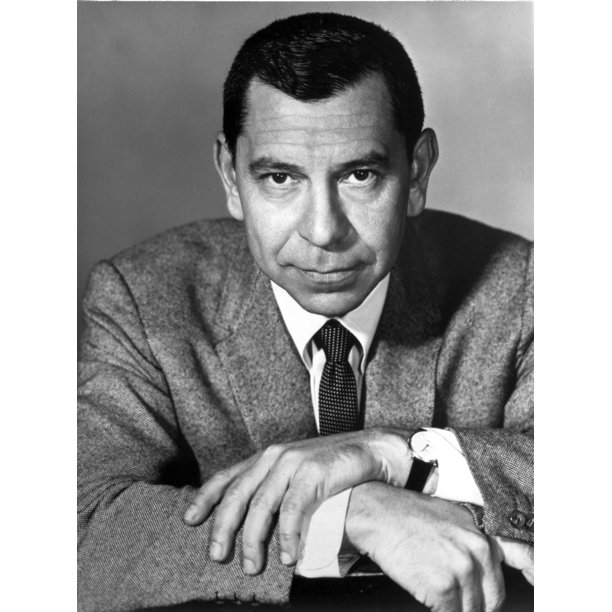 The show’s semi-documentary format was inspired by the motion picture, He Walked By Night (1948), in which Jack Webb played a forensic scientist. Technical advisor Sgt. Marty Wynn of the LAPD, suggested to Webb that a weekly radio program in the same vein might be worth developing. Webb accepted the suggestion and in the summer of 1949, Dragnet premiered on network radio. An instant hit, it came as no surprise that by 1951, the network urged Webb to adapt Dragnet to television. To accommodate, Webb created his own production company, Mark VII Limited Productions, which featured the signature left hand indenting the company logo on metal at the close of every broadcast (and yes, that was Jack Webb’s hand providing his personal signature/stamp for the quality of the production). Filming took place on location at Los Angeles, as well as the studio lot of Republic Pictures. Shortly after the first few episodes were shot, Webb struck a deal with Walt Disney to film the series at Walt Disney Studios in Burbank, for no rental fee, under the agreement that Webb would finance the construction of live-action sets for Disney’s production company, which in turn would be used for Disney’s motion pictures and television ventures.
The show’s semi-documentary format was inspired by the motion picture, He Walked By Night (1948), in which Jack Webb played a forensic scientist. Technical advisor Sgt. Marty Wynn of the LAPD, suggested to Webb that a weekly radio program in the same vein might be worth developing. Webb accepted the suggestion and in the summer of 1949, Dragnet premiered on network radio. An instant hit, it came as no surprise that by 1951, the network urged Webb to adapt Dragnet to television. To accommodate, Webb created his own production company, Mark VII Limited Productions, which featured the signature left hand indenting the company logo on metal at the close of every broadcast (and yes, that was Jack Webb’s hand providing his personal signature/stamp for the quality of the production). Filming took place on location at Los Angeles, as well as the studio lot of Republic Pictures. Shortly after the first few episodes were shot, Webb struck a deal with Walt Disney to film the series at Walt Disney Studios in Burbank, for no rental fee, under the agreement that Webb would finance the construction of live-action sets for Disney’s production company, which in turn would be used for Disney’s motion pictures and television ventures.
While production was standard for any fifties television show, Dragnet was a brilliant example of how police crime programs were to be tailored for television. Webb, as Sgt. Joe Friday, narrated the action: “It was 2:55 in the afternoon… We were working the day watch out of homicide…” No third degree methods or sadistic grilling was practiced on suspects — the stock in trade for most television detectives. Violence was almost non-existent. There was no blood-letting and none of the artificially contrived clichés to achieve suspense.
In the premiere episode of the television series, Sgt. Friday and his partner track down a movie actor who supposedly stole $10,000 worth of narcotics from a hospital where he was once a patient. The two sergeants trap the suspect into a confession by relentless questioning on a picture set, unaware that half a dozen cameras were rolling at the time, a representative of television entertainment at its best. The episode closes when the criminal is being waltzed off the set by the policemen, and on a humorous note, the film director, having misconstrued the long interrogation, observed that the actor had given “a fine reading” in contrast to his prior inadequacies before the cameras.
Perhaps the most memorable episode of the series was “The Big Little Jesus,” a special holiday offering. On Christmas Eve, Father Rojas at the Old Mission Plaza Church in Los Angeles discovers that the statue of the Infant Jesus has been stolen from the nativity display. The statue’s worth is only a few dollars, but it is of great sentimental value to the parish. Sgt. Friday and Sgt. Smith promise to try to find the statue and return it before mass on Christmas Day, but this means that they have less than 24 hours to catch the thief. Routine questioning of suspects leads nowhere and ultimately Sgt. Friday and his partner are forced to tell Father Rojas that they came up empty handed. Before they leave the mission, a small boy visits the mission, returning the stolen statue. The young boy explains to Father Rojas and the police that for years he prayed to God for a little red wagon for Christmas. This year the boy prayed to baby Jesus and promised if he got a wagon, he would allow baby Jesus the first ride in the wagon.
The superb scripts for Dragnet were from writers James Moser, Frank Burt and Gene Roddenberry, the latter would go on to create Star Trek. But you can really judge the success of a television program by the number of spoofs it generated. In 1953, Stan Freberg created an audio satire titled “St. George and the Dragonet” which was a smash hit record reaching top place on the Billboard charts. Woody Woodpecker, Looney Tunes, Milton Berle and Johnny Carson all got into the act of creating spoofs of the television program. In fact, when Jack Webb was a guest on any television program, the viewers would expect a Dragnet spoof somewhere within the hour.
Jack Webb died two days before Christmas 1982. After Webb’s death, Chief Daryl Gates of the Los Angeles Police Department publicly announced that badge 714 — the same number Webb had on the television program — had been retired, and Los Angeles city offices lowered their flags to half-staff. Jack Webb’s famous LAPD 714 Sergeant badge and LAPD I.D. card (genuine items) are presently on display at the Los Angeles Police Academy. (714 was, incidentally, the same number of Babe Ruth’s home runs and Webb initially chose 714 because he was a fan of Babe Ruth.)
Dragnet spawned major motion pictures in 1954, 1966 and 1987. The television series had a number of revivals; the first in the late sixties with Harry Morgan as Friday’s partner, Officer Bill Gannon. A syndicated revival with Jeff Osterhage as Vic Daniels in the lead lasted only a year from 1989 to 1990. Ed O’Neill played the role of Sgt. Joe Friday for a remake in 2003, produced by Dick Wolfe (producer of Law and Order). Regardless of the numerous remakes and revivals, both past and future efforts, there will never be anything like the original Dragnet series from the fifties, which broke the mold and set the stage for countless police procedurals to come.
LEND ME YOUR EARS | THIS MONTH’S SONG: PARADISE BY THE DASHBOARD LIGHT, BY MEATLOAF RELEASED: 1977
by Lisa Wolf
Written by Jim Steinman, this cult classic runs 8 minutes, 28 seconds.
Steinman said that his aim was to write “the ultimate car/sex song in which everything goes horribly wrong in the end.”
Meatloaf released the single “Paradise By The Dashboard Light” as part of the album “Bat out of Hell”. The song is about a man who recalls a one night stand he had when he was sixteen. As part of the song, former Yankee Phil “Scooter” Rizzuto calls a play in which a batter hits the ball and is running the bases. At that moment, Ellen Foley shouts “Stop right there” and wants the boy to promise he will marry her and love her forever.
“Paradise by the Dashboard Light” peaked at #39 on the US Billboard Hot 100 but it was certified platinum and remains a staple in classic rock radio stations.
“It was long ago and it was far away, And it was so much better than it is today”
Vince’s Verbiage: Fulfilling a Fantasy
by Carl’s Crabby Brother Vince
Happy November friends, I hope everyone is well. Have you ever fulfilled a dream or fantasy? I have, and I did it with my wonderful brother Carl. If you’ve read my past articles, you might remember I wrote about my love of baseball and my love for the Chicago Cubs ever since I was a young boy in the late 1950’s.
On top of a birthday cake when I was 9 or 10 was a plastic model of my idol Ernie Banks. I remember my eyes almost popped out of my head when I saw it. It was only 10 or 12 inches tall but it looked like a statue back then. It was Ernie in his #14 Cubs jersey in that famous batting stance of his. I wish I still had it but can’t remember what happened to it. A few years ago my kids got me a signed Ernie Banks Hall of Fame jersey housed in a beautiful etched glass frame for Christmas. That was an awesome gift! Anyway, back to my fantasy.
Since my brother loves baseball as much as I do, we decided back in 1994 when he and I worked together running his OTR company, to sign up for Randy Hundley’s Baseball Fantasy Camp. Randy was a fine all-star catcher for the Cubs in the 1960’s and 70’s. It was baseball all day for 8 days in Mesa, Arizona with just about everything included in one price: hotel accommodations, breakfast, lunch, our own complete uniform with our name and number on the back and much more cool stuff. It was totally professional all the way. We had former major leaguers coaching us. Some of the players there were former Cubs Fergie Jenkins, Glenn Beckert, Carmen Fanzone, Gene Oliver and Joe Pepitone. Hall of famer Bob Gibson, Bert Campaneris and many others. Us fantasy seekers were called “campers”. There were maybe 50 or so of us campers that signed up to live out our fantasy.
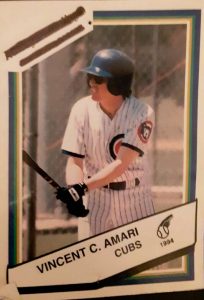 We started every day with a group breakfast followed by transportation to the fields. Once there, we’d go in the locker room and put on our freshly washed uniforms that were hung up nicely. While getting dressed, all the coaches and campers would talk about the games we played the previous day along with the former major leaguers reminiscing about their past baseball experiences, many of them hysterical! Once dressed and on the field it was calisthenics and stretching for about 45 minutes. After that they split the campers into 4 teams.
We started every day with a group breakfast followed by transportation to the fields. Once there, we’d go in the locker room and put on our freshly washed uniforms that were hung up nicely. While getting dressed, all the coaches and campers would talk about the games we played the previous day along with the former major leaguers reminiscing about their past baseball experiences, many of them hysterical! Once dressed and on the field it was calisthenics and stretching for about 45 minutes. After that they split the campers into 4 teams.
Since we had 2 fields, we played a game on each field. After the game we took about an hour break as they catered a full lunch by the bleachers. After lunch we played game two. Needless to say after the second game we were ready for a shower and some time in the hot tub. After that it was pretty much evening and we were on our own for dinner. One night Carl and I were at a restaurant and Bob Gibson was sitting by himself. We asked if we could join him and he graciously said “absolutely boys”. We had a wonderful dinner with a great pitcher and an even greater human being.
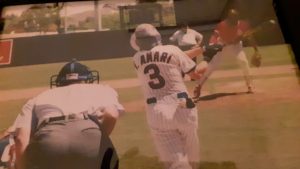 So, after 7 days of playing 2 games per day and spending all that time with the former players and other campers we built a camaraderie with all of them. Now for the 8th day — Us campers played a game vs the ex-pro’s! Each camper got to play a few innings and take a couple of at bats against them. Needless to say we got beat pretty badly. However, my brother Carl provided our highlights as he batted only once against Fergie Jenkins and once against Bob Gibson (both Hall of Famers) and believe it or not, hit a home run off of each of them. I merely grounded out and flied out against them. When I was playing 3rd base, Randy Hundley hit a line drive that I dove towards the base for and by the time I landed in the dirt and turned my head it was already bouncing off the left field wall. I thought to myself “man I’m glad I didn’t catch that, it probably would have broken my hand” he hit the ball so hard! So that evening they threw us a full blown banquet with great food and drink, baseballs signed by each former player, an authentic-looking million dollar Cubs contract, baseball cards of us campers, videos of all of our games and much more.
So, after 7 days of playing 2 games per day and spending all that time with the former players and other campers we built a camaraderie with all of them. Now for the 8th day — Us campers played a game vs the ex-pro’s! Each camper got to play a few innings and take a couple of at bats against them. Needless to say we got beat pretty badly. However, my brother Carl provided our highlights as he batted only once against Fergie Jenkins and once against Bob Gibson (both Hall of Famers) and believe it or not, hit a home run off of each of them. I merely grounded out and flied out against them. When I was playing 3rd base, Randy Hundley hit a line drive that I dove towards the base for and by the time I landed in the dirt and turned my head it was already bouncing off the left field wall. I thought to myself “man I’m glad I didn’t catch that, it probably would have broken my hand” he hit the ball so hard! So that evening they threw us a full blown banquet with great food and drink, baseballs signed by each former player, an authentic-looking million dollar Cubs contract, baseball cards of us campers, videos of all of our games and much more.
I can honestly say it was some of the most fun I’ve ever had and I’m glad I got to spend it with my wonderful brother and it did fulfill a fantasy of being like a Major Leaguer (for 8 days at least).

Observations on the Obscure: Rosa Barcelo – Queen Melissa of The Cinnamon Bear
by Karl Schadow
This month’s entry concludes our biographical studies of various cast members of Classic Radio’s premiere children’s Christmas fantasy, The Cinnamon Bear. Our previous profiles included the discovery of Bobby La Manche (Robert Lomench) as Jimmy Barton followed by a brief capsule of Bud Duncan who portrayed Paddy O’Cinnamon – The Cinnamon Bear. This month the focus is on Rosa Barcelo who essayed the part of Queen Melissa. In this role, she presented helpful though at times challenging clues to both Jimmy and his twin sister Judy in their search for the coveted Silver Star.
Born Rosemary Gladys Barcelo on March 28, 1917 at New Orleans, Louisiana, by age 13, she had been bitten by the acting bug. Her mentors in New Orleans included Miss Jessie Tharp at Wright High School and also the local dramatic coach Ben Hanley. Her family moved to the West Coast which offered her the opportunity to complete her secondary education in Southern California. Following graduation she performed at Los Angeles area radio stations. These included local productions on KFAC (Greek Letter Murder), KFWB (Vanity Fair) and KHJ (Tapestries of Life). She was also heard in the CBS Pacific Coast Network series Secret Ambition which originated from KNX.
 Rosa Barcelo was also tapped by several transcription firms which showcased her talents. In addition to The Cinnamon Bear for Transco (Radio Transcription Company of America, Ltd), paychecks were received for Love Tales, Thrills of Great Operas, That Was The Year and The Story Behind The Song. She also had a supporting role in Jerry of the Circus. For the Atlas Radio Corporation she appeared in Album of Life, Buddies and Metropolis. Her most prominent role for this firm however, was in Magic Island in which she portrayed Joan Gregory, the lost daughter of Mrs. Patricia Gregory.
Rosa Barcelo was also tapped by several transcription firms which showcased her talents. In addition to The Cinnamon Bear for Transco (Radio Transcription Company of America, Ltd), paychecks were received for Love Tales, Thrills of Great Operas, That Was The Year and The Story Behind The Song. She also had a supporting role in Jerry of the Circus. For the Atlas Radio Corporation she appeared in Album of Life, Buddies and Metropolis. Her most prominent role for this firm however, was in Magic Island in which she portrayed Joan Gregory, the lost daughter of Mrs. Patricia Gregory.
As Barcelo’s true love was the stage, she pursued opportunities with several theatrical groups including the Pasadena Community Playhouse, Beverly Hills Players and Actors’ Little Theater. In the latter she was the lead in The Land Beyond.
Her major professional goal in life was to perform in New York. Therefore, after accumulating several years of experience, in 1940 she departed California for Manhattan. During that first summer she was a member of The Shakespearean Fellowship, a New York-based foundation that was performing in Saddle River, New Jersey. Moreover, she studied under legendary drama instructor Frances Robinson-Duff whose list of pupils included Katherine Hepburn and Clark Gable among many other headliners. In radio, she earned a major supporting role in The Story of Bess Johnson and also performed with Al Jolson, Phil Baker and Helen Hayes. In an interview with newspaper columnist Elsie Brupbacher (New Orleans States, October 26, 1950) Barcelo was told by The First Lady of Theater: “… that she could act the part of a Southern girl better than Miss Hayes herself.”
That interview had taken place six years after Barcelo had departed New York to return to her native home. She offered this advice for those aspiring thespians: “Trying to crack the theater or radio field in New York means knocking on doors, writing letters, trying to get auditions, visiting advertising agencies, interviewing directors – all in all, a long slow tedious process to become ‘known.’” She concluded her comments noting: “I think it’s much nicer to have a satisfactory career in local radio and community work.”
Indeed, during the period leading up to that interview, she had immediately resumed her stage career in New Orleans as leading actress in Shakespeare’s There’s Always Juliet at the Le Petit Theatre du Vieux Carre. On radio she was often in the cast of Road to Yesterday which entertained station WWL’s audience for several years with dramatized legends of Old New Orleans and Louisiana. By 1950 Barcelo was director of women’s programs at WTPS, serving as host of her own program, Rosemary’s Notebook and co-host of the quiz show Barrel of Dough.
In 1952 she married local attorney Brunswick Deutsch. During the next several decades she would occasionally act before the microphone. However, her focus was always the theater as she continued to perform on stage including in such productions as My Fair Lady in 1991. She and her husband traveled widely often enjoying the latest plays while in New York. In 2001, the Deutsch’s established three charitable endeavors with the Greater New Orleans Foundation. One these was designed to continually perpetuate the local theater community, the Rosemary B. and Brunswick G. Deutsch Foundation for Le Petit Theatre du Vieux Carre.
Rosemary Barcelo Deutsch passed away on July 11, 2020 at age 103. She had lived a remarkable life.
Those readers wishing to share information regarding Rosa Barcelo, contact the author at khschadow@gmail.com
THE CINNAMON BEAR is available for purchase here.
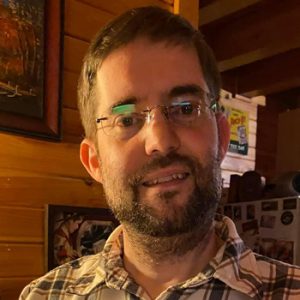
MartinGrams.biz: THE WRITING TEAM OF ROBERT A. ARTHUR AND DAVID KOGAN
by Martin Grams
 Robert Arthur once wrote that “suspense is that quality in a story which makes you want to keep on reading it to find out what happens. By this definition any good story, of course, has suspense in it. A love story can have suspense – does it end happily? A mountain climbing story can have suspense – does the hero get to the top of does he slip and fall over a cliff?” Such was the brief exploration in the mind of a writer who today is synonymous with The Mysterious Traveler radio program. Together with producer-director David Kogan, Arthur scripted more than half of the stories for the eerie program that was broadcast weekly over the Mutual Broadcasting System.
Robert Arthur once wrote that “suspense is that quality in a story which makes you want to keep on reading it to find out what happens. By this definition any good story, of course, has suspense in it. A love story can have suspense – does it end happily? A mountain climbing story can have suspense – does the hero get to the top of does he slip and fall over a cliff?” Such was the brief exploration in the mind of a writer who today is synonymous with The Mysterious Traveler radio program. Together with producer-director David Kogan, Arthur scripted more than half of the stories for the eerie program that was broadcast weekly over the Mutual Broadcasting System.
Robert Arthur’s accomplishments extended beyond a single radio program. Prior to his radio career he was a prolific writer of hundreds of short stories and novellas for pulp magazines. From science-fiction to detective fare, Arthur made a living hammering the keys of his typewriter and submitting stories to the editors of national magazines. Many of these stories were recycled for radio programs including Dark Destiny, Just Five Lines and Murder by Experts. He also recycled plots and characters from short stories for The Shadow, Nick Carter, Master Detective and Suspense. What adds to the confusion is deciphering which came first… the radio play or the short story?
 “Death Thumbs a Ride” was originally published in the January 1942 issue of Weird Tales, then adapted into an episode of The Mysterious Traveler, re-titled “The Haunted Trailer,” for broadcast on June 3, 1952. The radio version featured a number of minor revisions when you compare the extant recording of that broadcast to the printed page. The radio version would later be re-written into short story form as “The Haunted Trailer” for Alfred Hitchcock’s Ghostly Gallery (Random House, 1962) and again in A Red Skel(e)ton in Your Closet (Grosset & Dunlap, 1965) and again in Red Skelton’s Favorite Ghost Stories (Tempo, 1970).
“Death Thumbs a Ride” was originally published in the January 1942 issue of Weird Tales, then adapted into an episode of The Mysterious Traveler, re-titled “The Haunted Trailer,” for broadcast on June 3, 1952. The radio version featured a number of minor revisions when you compare the extant recording of that broadcast to the printed page. The radio version would later be re-written into short story form as “The Haunted Trailer” for Alfred Hitchcock’s Ghostly Gallery (Random House, 1962) and again in A Red Skel(e)ton in Your Closet (Grosset & Dunlap, 1965) and again in Red Skelton’s Favorite Ghost Stories (Tempo, 1970).
“Calling All Corpses,” published in the October 1948 issue of Dime Mystery Magazine, was an adaptation of an original radio play, “Welcome Home,” dramatized on both The Mysterious Traveler in 1943 and The Sealed Book circa 1945.
“Death Laughs Last,” broadcast on The Mysterious Traveler on the evening of September 24, 1944, was based on the short story, “The Dead Laugh Last,” published in the August 1942 issue of Detective Novels Magazine.
 Also adding to the confusion is the fact that Arthur wrote under numerous aliases. Robert Forbes, John West, Anthony Morton, Andrew Fell, Jay Norman, Joan Vatsek (the name of his wife, incidentally), A.A. Fleming, Andrew Benedict, Pauline C. Smith, Andrew Saxon, John A. Saxon and Mark Williams have been verified. Further digging in the coming year may reveal a few more pseudonyms. The purpose of a pseudonym, by the way, was for writers to collect more money for their stories – including two or three submissions appearing in the same issue of the same magazine.
Also adding to the confusion is the fact that Arthur wrote under numerous aliases. Robert Forbes, John West, Anthony Morton, Andrew Fell, Jay Norman, Joan Vatsek (the name of his wife, incidentally), A.A. Fleming, Andrew Benedict, Pauline C. Smith, Andrew Saxon, John A. Saxon and Mark Williams have been verified. Further digging in the coming year may reveal a few more pseudonyms. The purpose of a pseudonym, by the way, was for writers to collect more money for their stories – including two or three submissions appearing in the same issue of the same magazine.
About half of his short stories have been reprinted in paperback and hardcover anthologies over the years, making it easier for curiosity seekers to find a copy without having to shell out $85 for a detective pulp magazine in the collector market. When The Mysterious Traveler branched into a series of five mystery magazines, Arthur was the editor and multiple short stories written by Arthur appeared within the same issue. During the mid-fifties, Arthur also ghost-wrote for Alfred Hitchcock for a series of hardcover and paperback anthologies. Besides the fact that one story in each of these anthologies were written by Robert Arthur, the copyright page always acknowledged “the invaluable assistance of Robert Arthur in the preparation of this volume.” This included Alfred Hitchcock Presents: Stories They Wouldn’t Let Me Do On TV (1957) and Alfred Hitchcock Presents: My Favorites in Suspense (1959).
 Beginning in 1964, Robert Arthur began writing a series of children’s books in the hopes of cashing in on the success of such popular publications as The Hardy Boys and Rick Brandt. Alfred Hitchcock and the Three Investigators series comprised of 43 books. Arthur wrote the first nine, and the eleventh. Other authors assumed the task following Arthur’s departure.
Beginning in 1964, Robert Arthur began writing a series of children’s books in the hopes of cashing in on the success of such popular publications as The Hardy Boys and Rick Brandt. Alfred Hitchcock and the Three Investigators series comprised of 43 books. Arthur wrote the first nine, and the eleventh. Other authors assumed the task following Arthur’s departure.
He was twice honored by the Mystery Writers of America with an Edgar Award for Best Radio Drama; 1950 for Murder by Experts and 1953 for The Mysterious Traveler. Regrettably, recordings for the majority of his radio contributions do not exist in recorded form. No recordings are known to exist of his contributions for Adventure Into Fear (1945), The Teller of Tales (1950) and Mystery Time (1952).
On The Mysterious Traveler, The Sealed Book and other programs, Arthur and Kogan shared joint authorship but like Lennon and McCarthy, scripts were always written solo. This Halloween, when you take time to listen to an episode of The Strange Dr. Weird or The Mysterious Traveler, take a moment to remember that while those programs have an E.C. Comics feel of blood n’ thunder, the pulp style of science-fiction, fantasy and horror also have a pulp origin.
Hollywood 360 Schedule
11/6/21
Barrie Craig, Confidential Investigator 1/2/52 Death of a Private Eye
The Adv. of Maisie 11/2/50 The Duel
Box Thirteen 11/21/47 Shanghaied
The Phil Harris & Alice Faye Show 10/24/48 The Live Steer
The Shadow 2/20/38 Hounds in the Hills
11/13/21
My Friend Irma 2/23/48 It’s all Relative
Hopalong Cassidy 3/3/51 Buckshot Badman
Fibber McGee & Molly 11/23/48 Doc’s Pheasants
Dragnet 8/16/51 The Big Winchester
Crime Classics 8/10/53 The Axe and the Droot Family: How They Fared
11/20/21
Night Beat 5/29/50 Harlan Matthews Stamp Dealer
The Jack Benny Program 11/30/47 The Turkey Dream
The Big Story 1/11/50 Gambling, Divorce and Murder
The Burns & Allen Show 3/6/47 Gracie Takes Up Crime Solving
Dangerous Assignment 7/23/49 Nigeria
11/27/21
The Philco Radio Time 10/15/47 starring Bing Crosby w/ guest, Dinah Shore
Suspense 11/15/45 Murder Off Key
The Great Gildersleeve 9/26/43 Leila Arrives Home
Frontier Gentleman 8/10/58 The Cat Man
Cloak & Dagger 7/2/50 Eyes of Buddha
© 2021 Hollywood 360 Newsletter. The articles in the Hollywood 360 Newsletter are copyrighted and held by their respective authors.

